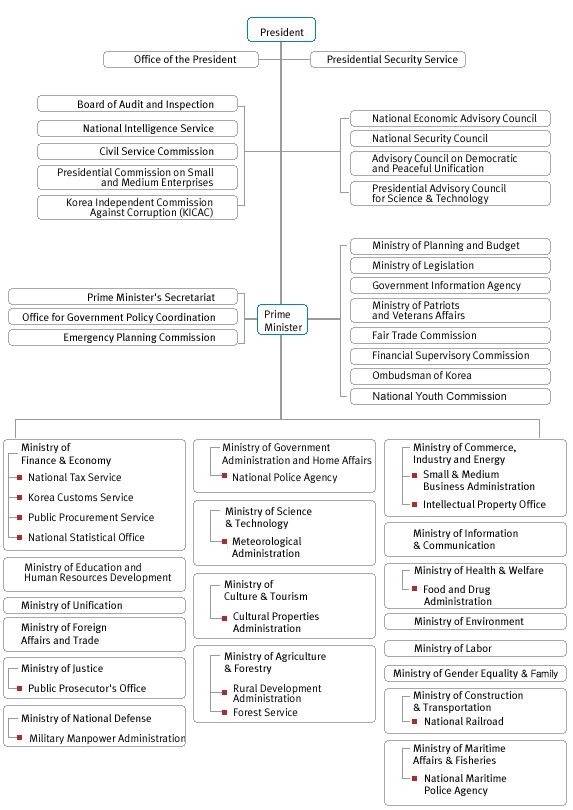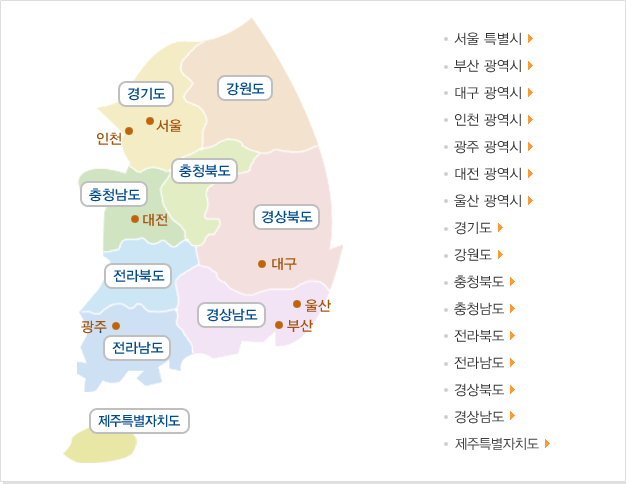XO Korea/Government/Introduction
환영합니다 | Portal | XO Korea | Deployment | Content | Hardware | Software | Mesh Network | Ethics | LOS | XO City | Accreditation | Consortium
There are more than 10,000 states, cities, counties, or other governmental organizations in Korea. You can see rabbit ears at a government's location if the local government deploys XO for their residents.
At the end of year 2005, there were 931,025 governmental employees, and currently (June 1st, 2007) are about 960,000 employees.
We estimate there shall be about 50,000 Governmental Servers, each of which will do a role of virtual government. For functions to be loaded on each server, see Governmental Fuctions, composed of about 60,000 rough functions, each again being composed of 1~10 sub-functions.
- XO Budget = Num of (Students + Teachers + Officers) * $220 (per Person cost)
- per Person Cost $220 =
- $200 -- Unit Price of Larger XO +
- $10 -- 1/20 of Unit Price of School Server +
- $10 -- Logistics + Extra Machines cost + Other Expenses
- See Financial Plans for details.
| Government Deployment | National Government | Local Governments | Governmental Subsidiaries | ||||||||||
We hope to provide OLPC to the government sections of Korea, not OLPC(hild) but OLPC(itizen). Among about 950,000 government employees of Korea in 2006, about 340,000 persons are working for the central government. See OLPC Smartphone or Type III OLPC for details.
Our plan is to provide governmental employees with;
- about 950,000 Type III OLPC: OLPC Smartphone
- one Open Enterprise Architecture
- about 10,000 Government Servers
Those servers and OLPCs may provide children with another kind of school, Government School. See wko.in for details of our contacts with various Korean governments in Korean language.
Below is the organizational chart of the central government of Korea. As the Korean government pursues decentralized management rather than centralization, we contact each ministry one by one and the progress will be shown here on periodical basis.

환영합니다 | Portal | XO Korea | Deployment | Content | Hardware | Software | Mesh Network | Ethics | LOS | XO City | Accreditation | Consortium
It's about some content of OLPC for governmental employees.
Among 933,663 government employees of Korea in 2006, 343,494 persons are working for local governments. So, we plan to provide about 350,000 Type III OLPC or OLPC Smartphone to those employees and about 3,500 Government Servers. See OLPC Korea for estimated costs, and Korean central governments about our approach to governmental sections from the viewpoint of the OLPC project.
Detailed when, where, how, what, why, who information of providing OLPC to each Korean local government will be shown below, and we hope your feedbacks.
| Government Deployment | National Government | Local Governments | Governmental Subsidiaries | ||||||||||
At March 2007, there are 313 corporations (239,096 employees) and more than 2,000 small or medium size non-profit entities owned or contributed by the Korean central and local governments respectively. OLPC Korea hope to deliver about 240,000 Type III OLPCs and 2,400 servers to those entities with Open Enterprise Architecture. You may see the list of those corporations at Public Management Information System.
We plan to provide a hybrid of Government Server and Business Server to those entities, and our progresses will be shown in this page.
Because all our plans should be harmonized with those of the Korean governments such as Vision2030 Plan, we must present some visions of what those governmental corporations obtaining from adopting our OLPC-related plans. That is related to some governmental revenue or expense (budget) issues.
Financial Affairs
- Assets: USD 6,030 billion at the end of 2006.
- Revenue/expense: USD 2644 billions at the end of 2006.
- Other financial ratios
What is the benefit of adopting Type III OLPC?
Educational Affairs
- Benefits from educating employees
- Benefit from educating citizens
- Benefit from educating children
Other Issues
- Macroeconomic issues
- Privatization
